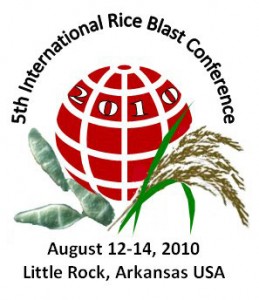IRRI Rice Research Institute & Conference

TRAD. FOOD, AYURVEDA, BIODIVERSITY
The Rice Price Crisis Prevention
The International Rice Research Institute (IRRI) is an autonomous, non-profit, agricultural research and training organization with offices in more than ten nations. The Institute’s main goal is to find sustainable ways to improve the well being of present and future generations of poor rice farmers and consumers while at the same time protecting the natural environment. Most of IRRI’s research is done in cooperation with the national agricultural research and development institutions, farming communities, and other organizations of the world’s rice producing nations. Read More: > HERE <
Rice is the seed of a monocot plant Oryza sativa. As a cereal grain, it is the most important staple food for a large part of the world’s human population, especially in East, South, Southeast Asia, the Middle East, Latin America, and the West Indies. It is the grain with the second highest worldwide production, after maize („corn“).Read More: > HERE <
The years 2007–2008 saw dramatic increases in world food prices, creating a global crisis and causing political and economical instability and social unrest in both poor and developed nations. Systemic causes for the worldwide increases in food prices continue to be the subject of debate. Initial causes of the late 2006 price spikes included droughts in grain-producing nations and rising oil prices. Read More: > HERE <
IRRI´s MISSION – To reduce poverty and hunger, improve the health of rice farmers and consumers, and ensure environmental sustainability through collaborative research, partnerships, and the strengthening of national agricultural research and extension systems.
The Cereal Knowledge Bank (CKB) is the world’s leading repository of extension and training materials related to cereal and cereal production. The CKB was launched in January 2008 and is managed by the International Rice Research Institute (IRRI) and International Maize and Wheat Improvement Center (CIMMYT) as a service to people working to improve the well-being of poor cereal farmers and consumers.
> FREE BOOK: Asian rice bowls: the returning crisis? – Prabhu L. Pingali <
5th International Rice blast Conference, caused by Magnaporthe oryzae, remains one of the most destructive rice diseases worldwide. In the three years since the 4th International Rice Blast Conference (IRBC) was held in Changsha, Hunan, China, rapid progress has been made in a wide range of research topics on the biology, genomics, host-pathogen interactions, resistance, and disease management. On behalf of the 5th IRBC organizing committee, we cordially invite you to attend this exciting meeting. > CONFERENCE DETAILS <
Invitation to the 3rd International Rice Congress – It is our privilege and pleasure to welcome you to the 3rd International Rice Congress (IRC) to be held 8 – 12 November 2010 at the Vietnam National Convention Center, Hanoi, Vietnam. The event is hosted by the Ministry of Agriculture and Rural Development (MARD), Vietnam, and jointly organized by the International Rice Research Institute (IRRI) and AsiaCongress Events Management Co. Ltd (ACE). www.ricecongress.com
HILDEGARD OF BINGEN & FAMOUS SPELT CURE – Hildegard medicine is based on the wisdom of the saintly Hildegard (1098-1179), abbess of Bingen. The great mystic, composer and healer is considered to be the first important naturopath and herbalist of the Middle ages. Her teachings, based on the harmony between body and soul, are reflected in today’s holistic approaches to prevention and healing. Hildegard medicine taps the available healing forces of nature to treat illness by restoring disrupted balance. Hildegard emphasized nutrition, primarily with use of spelt, a type of grain; detoxification, by fasting or bloodletting; and the use of remedies from plant, animal and mineral sources. Her writings offer recipes for 12000 such remedies, which apply to the most diverse symptoms and diseases.
Spelt – According to Hildegard of Bingen, spelt is the „most nutritious grain“, providing „right flesh and right blood“. She recommends breads and soups containing spelt to purify the blood, strengthen the nerves and heal intestinal disorders. You can find spelt at most health food stores. The Treatment – First comes an examination of the person as a whole, not just symptoms but lifestyle and temperament. The nutritional therapy consists of suggesting foods that are specifically adapted to the individual patient. Then purifying procedures, such as bloodletting, are recommended. Finally, stimulating herbal remedies are prescribed. The goal of Hildegard medicine – Hildegard medicine is a means of regulating the systems of the body in relation to one another. The goal is to reverse the disruption of the natural balance in the body, which is the cause of the illness. This effect is achieved through appropriate nutrition, detoxification and nature based remedies. The viewpoint of mainstream medicine – Some aspects of Hildegard medicine cannot be explained scientifically. However, holistic approaches to illness have been successful for a wide range of patients, who respond well to treatments that include more than chemical targeting of symptoms.
- Das International Rice Research Institute (IRRI) www.payer.de <
- TSAMPA, HIMALAYAN CHILDREN, CEREALS <
- Meet Tibetan Tsampa, friends, fans at fb <
- Meet Int.Society of Hildegard von Bingen Studies, friends at fb <
- Meet International Year of Biodiversity 2010, friends, fans at fb <
- http://en.wikipedia.org/wiki/2007%E2%80%932008_world_food_price_crisis
Comments are closed.